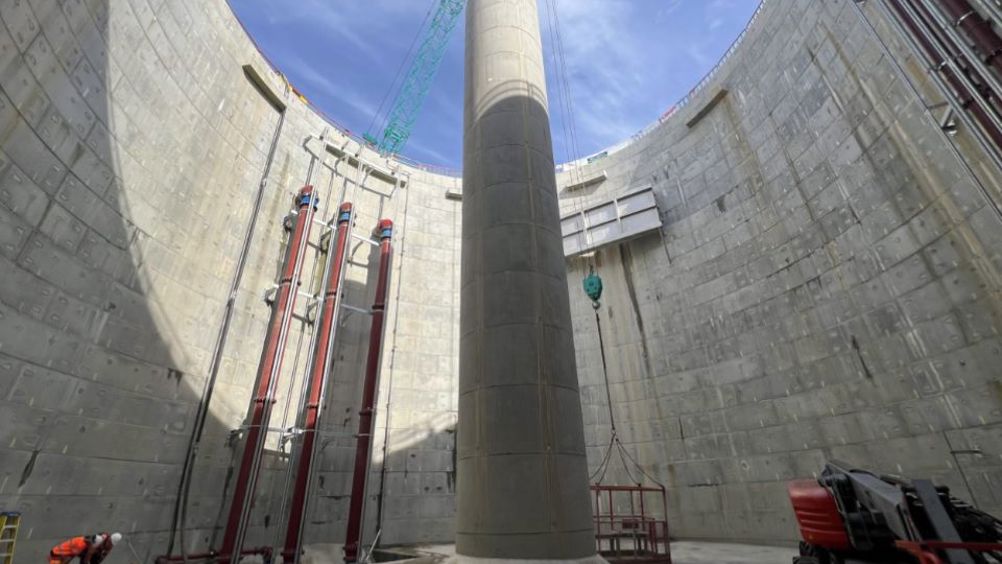Severn Trent unveils 25m deep storm overflow tank
Severn Trent has unveiled a 25m deep by 25m wide storm overflow storage tank designed to protect residents of Stroud from potential flooding and prevent spills into rivers.

The Stroud Sewer Strategy project has delivered a 7,400m3 capacity concrete-lined tank built with partners Galliford Try.
The mega tank is part of Severn Trent’s £25m project to upgrade Stroud’s largely Victorian-built sewer network and includes installing four miles of enlarged pipes, plus separating surface water from the waste network.
Four tunnel boring machines were used to install the new sewer pipes under the Gloucestershire town, as well as lining 1km of old brick Victorian sewers with polypropylene to stop groundwater infiltrating and adding more water to the pipes.
According to Severn Trent, the tank will improve water storage capacity in the area by around 1,300 per cent during heavy rainfall, helping to reduce sewer flooding and spills into rivers and watercourses. Its ‘smart controls’ will hold storm water back during severe weather events and return it back to the water company’s treatment works when rainfall has subsided.
Register now to continue reading
Thanks for visiting The Engineer. You’ve now reached your monthly limit of news stories. Register for free to unlock unlimited access to all of our news coverage, as well as premium content including opinion, in-depth features and special reports.
Benefits of registering
-
In-depth insights and coverage of key emerging trends
-
Unrestricted access to special reports throughout the year
-
Daily technology news delivered straight to your inbox










Water Sector Talent Exodus Could Cripple The Sector
Maybe if things are essential for the running of a country and we want to pay a fair price we should be running these utilities on a not for profit...